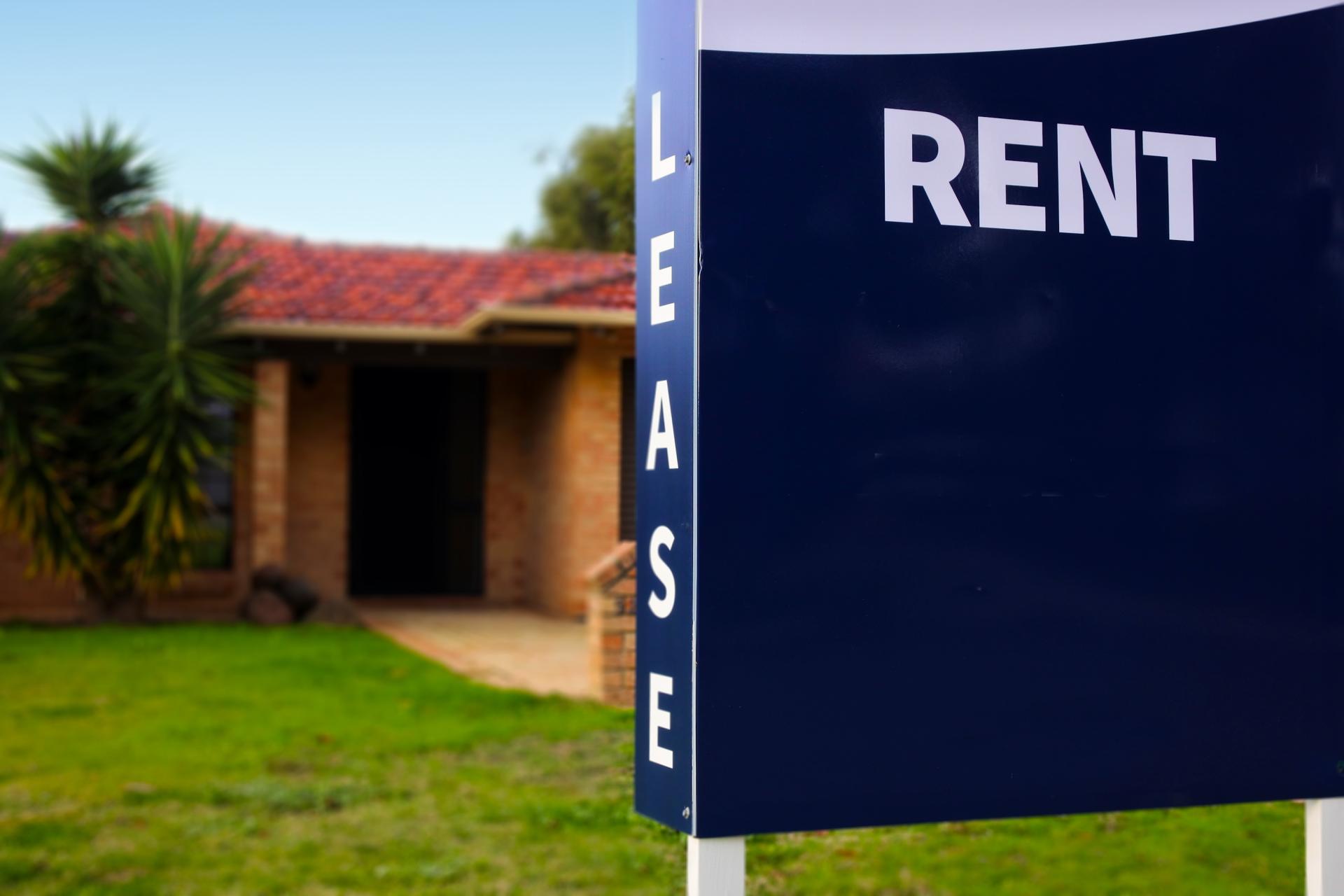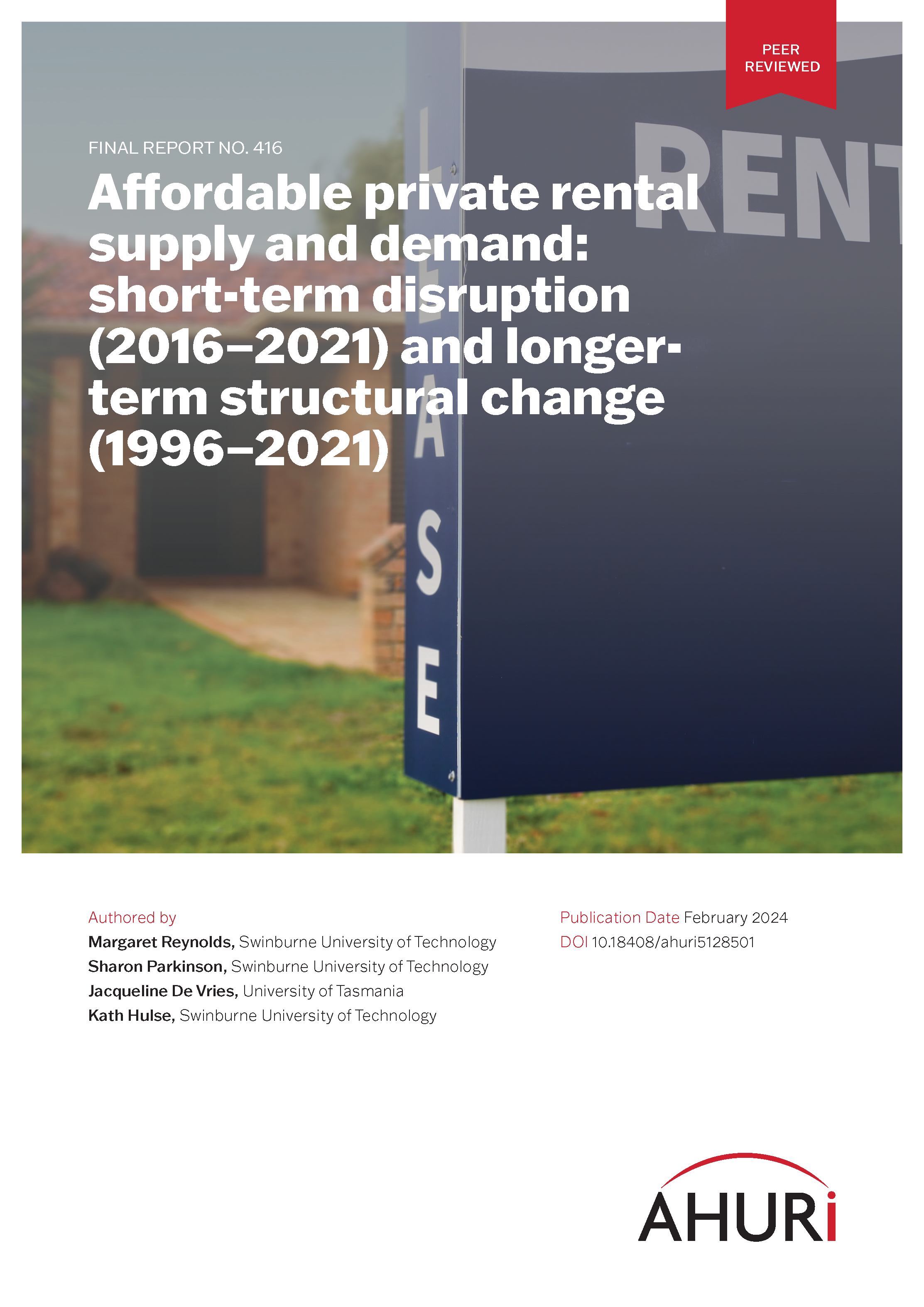
More ‘rich’ are renting, while low income renters face greater stress
21 Feb 2024
New AHURI research has revealed today that more households with higher incomes are renting and the shortage of private rental homes that are affordable for very low income households has worsened.
The research, ‘Affordable private rental supply and demand: short-term disruption (2016–2021) and longer-term structural change (1996–2021)’, undertaken for AHURI by researchers from Swinburne University of Technology and the University of Tasmania, analyses ABS Census data to reveal changes in the supply of private rental housing that is affordable and available to lower income households over both the short term (2016–21) and the longer term (1996–2021).
The research found there was a shortage of 348,000 affordable and available private rental homes for households with the lowest 20 per cent of incomes in 2021, compared to a shortage of 211,000 dwellings 15 years ago. As a result, 82 per cent of very low income renting households were in housing affordability stress when the Census was taken in 2021, at a time when COVID-19 conditions were temporarily relieving pressure on the rental market.
More households in top income levels are renting – now nearly a quarter of renters
‘The 2021 Census highlights the long-term change in the national distribution of renting household incomes,’ says research author, Margaret Reynolds of Swinburne University. ‘There has been a significant growth of renting households with high incomes of around $140,000 per year and above (in $2021) – these households accounted for only 8 per cent of private renters in 1996, ballooning to 24 per cent in 2021.’
Lower priced rentals now only 13 per cent of private rental stock – down from 60 per cent 25 years ago
In 2021, lowest rent dwellings (with rents up to $266/week, $2021) comprised only 13 per cent of private rental stock in 2021; a segment of the market that made up nearly 60 per cent of private stock in 1996 and half of the stock in 2001. Ms Reynolds comments, 'Interestingly the 2016–21 period saw a small increase in the number of more affordable dwellings priced at the lowest end of the market. This is the first time in the last 25 years there has been an increase in the number of low rent dwellings, however this is very likely a short-term anomaly shaped by COVID-19 conditions at the time of the Census, which saw a dramatic fall in demand for private rental, falls in rents and increases in vacancy rates.’
Shortage of nearly 350,000 homes affordable and available for households with lowest incomes
Of a total 425,000 renting households in the lowest income quintile, only 77,000 were able to find an affordable home. The other 348,000 households (or 82%) were in housing affordability stress (where they pay more than 30% of their income in rent). ‘This is because not all the lowest price rentals are available to be rented by households on the lowest incomes – many of these dwellings are occupied by households on higher incomes, making the shortage of lower priced homes even more acute,’ says Ms Reynolds.
‘Unfortunately, the situation has not improved for lower income renters since the Census was taken. In 2022 rents began to increase substantially, leading to what many have termed a ‘rent crisis,’ as migration and mobility returned to pre-COVID levels placing additional demand pressure on the private rental market.’

